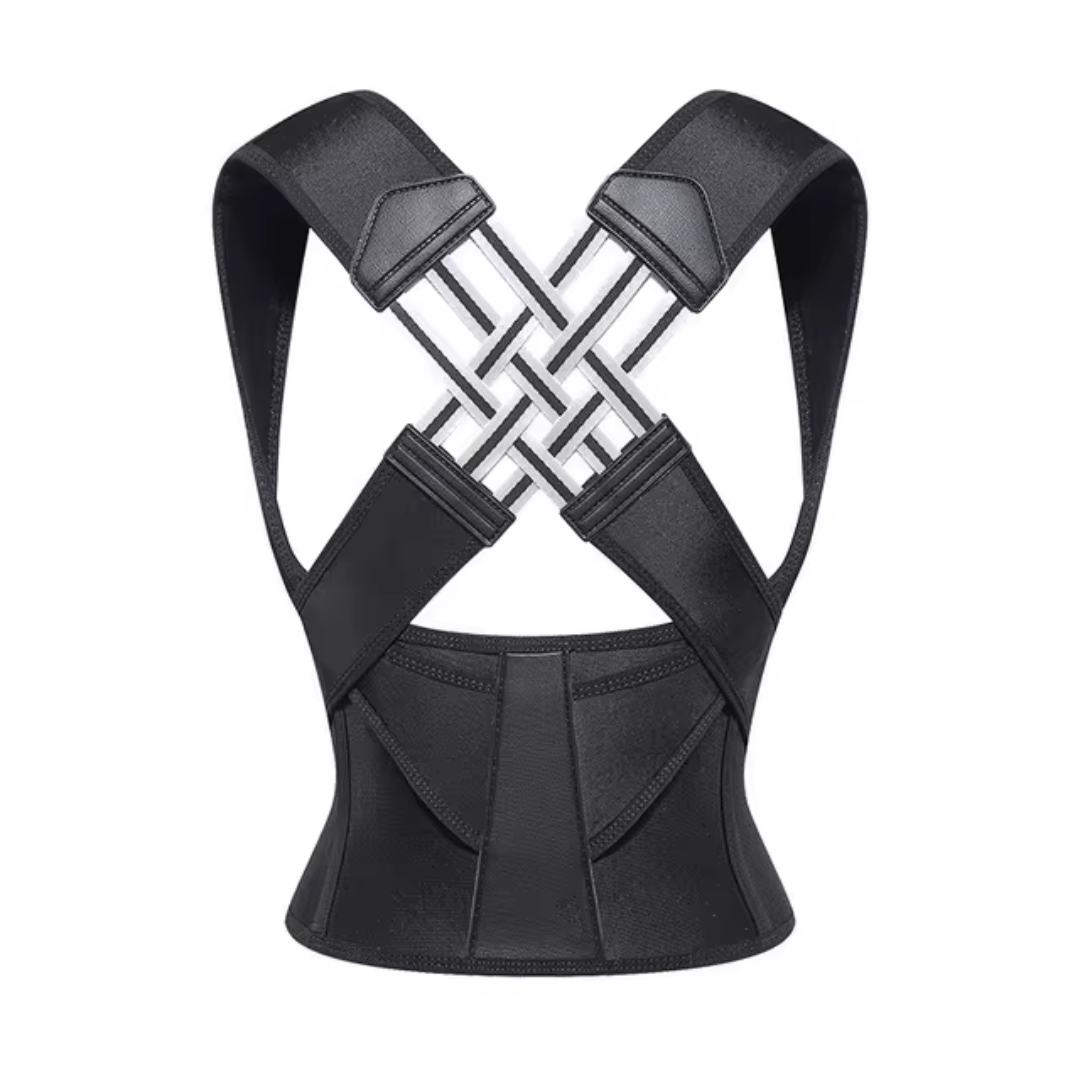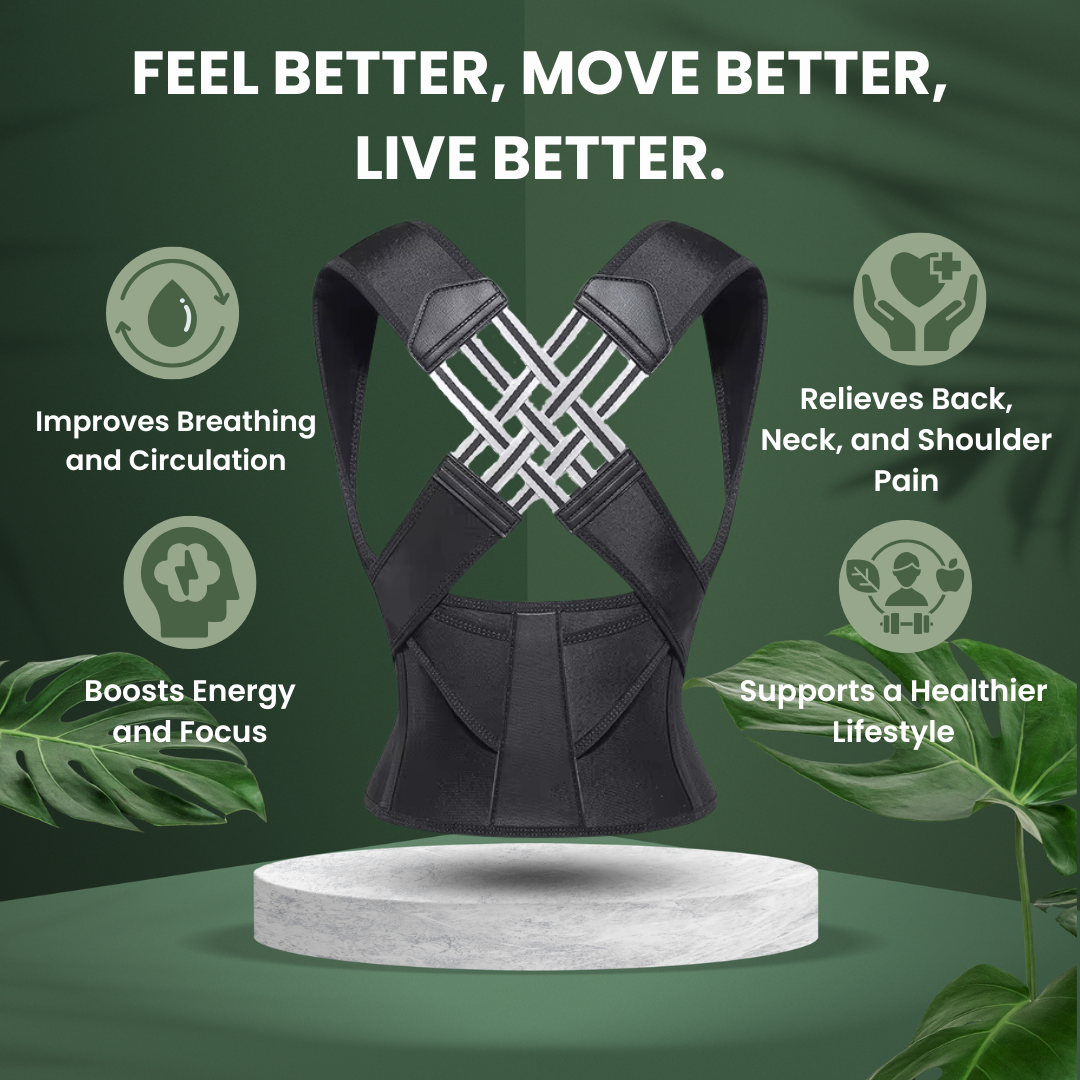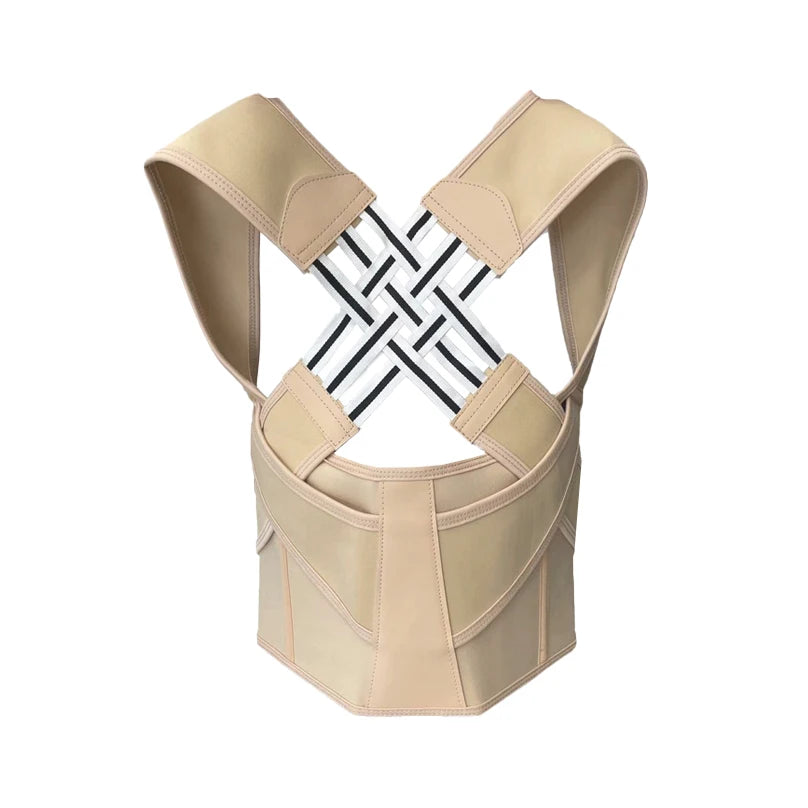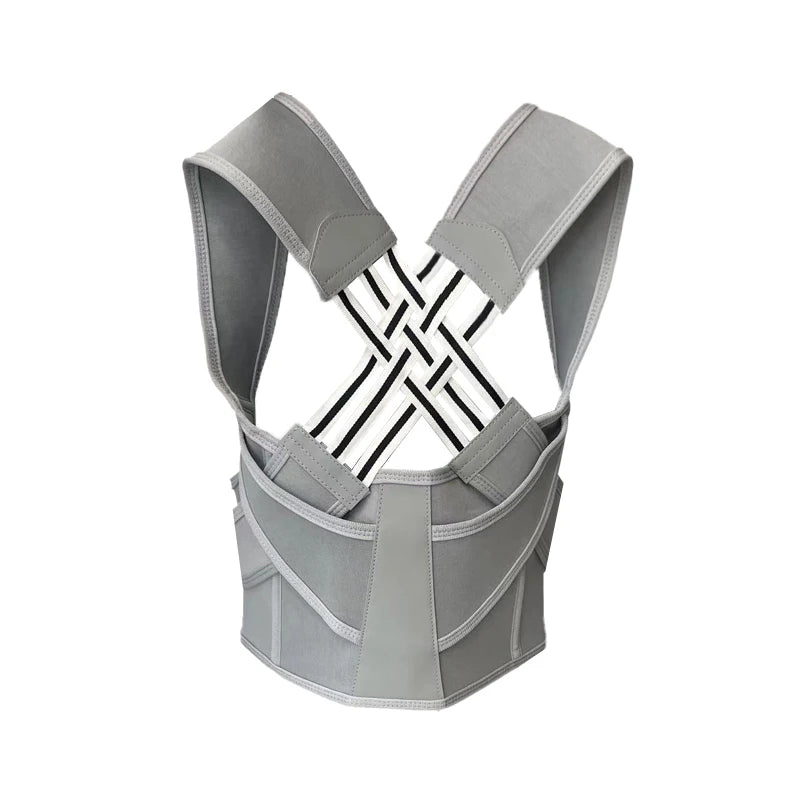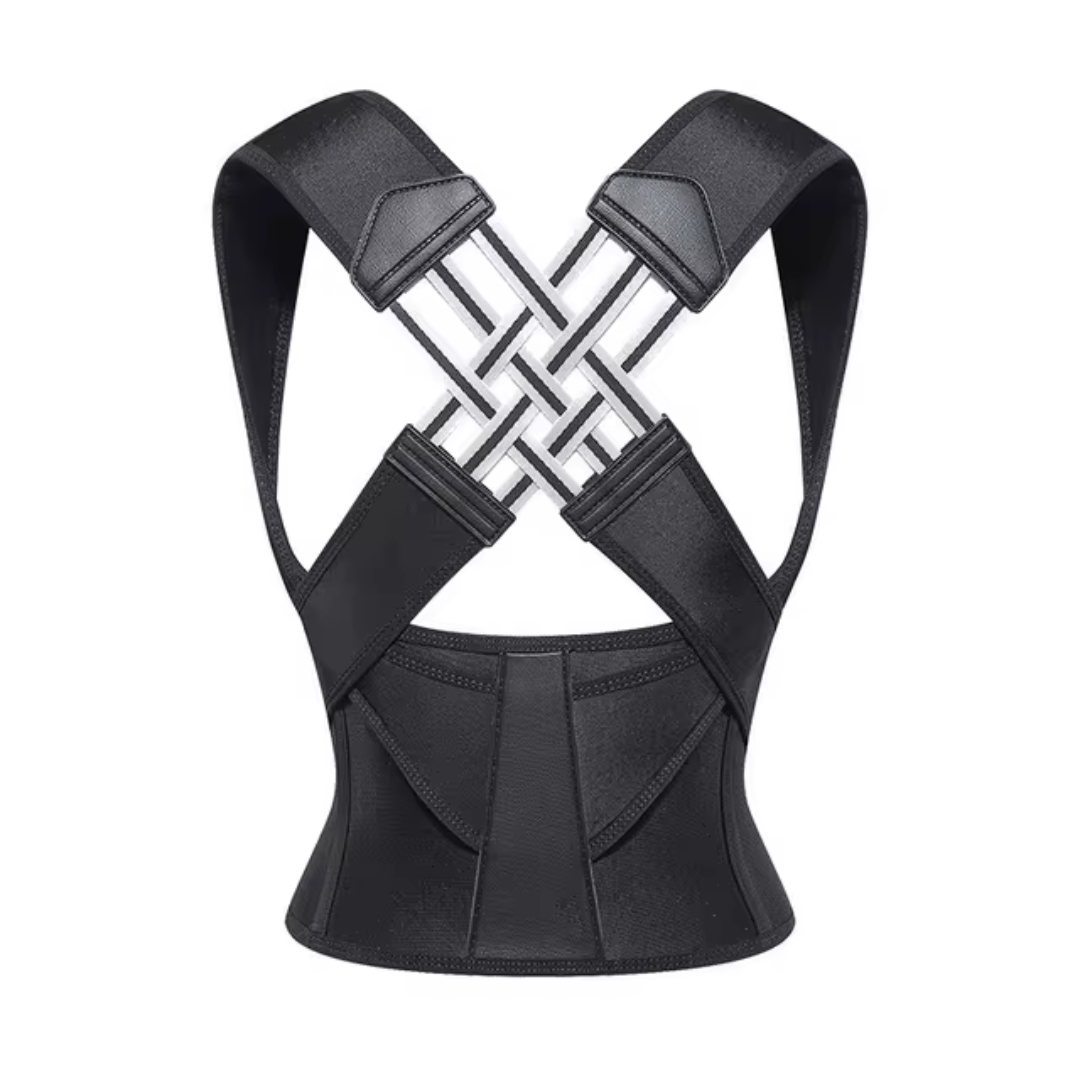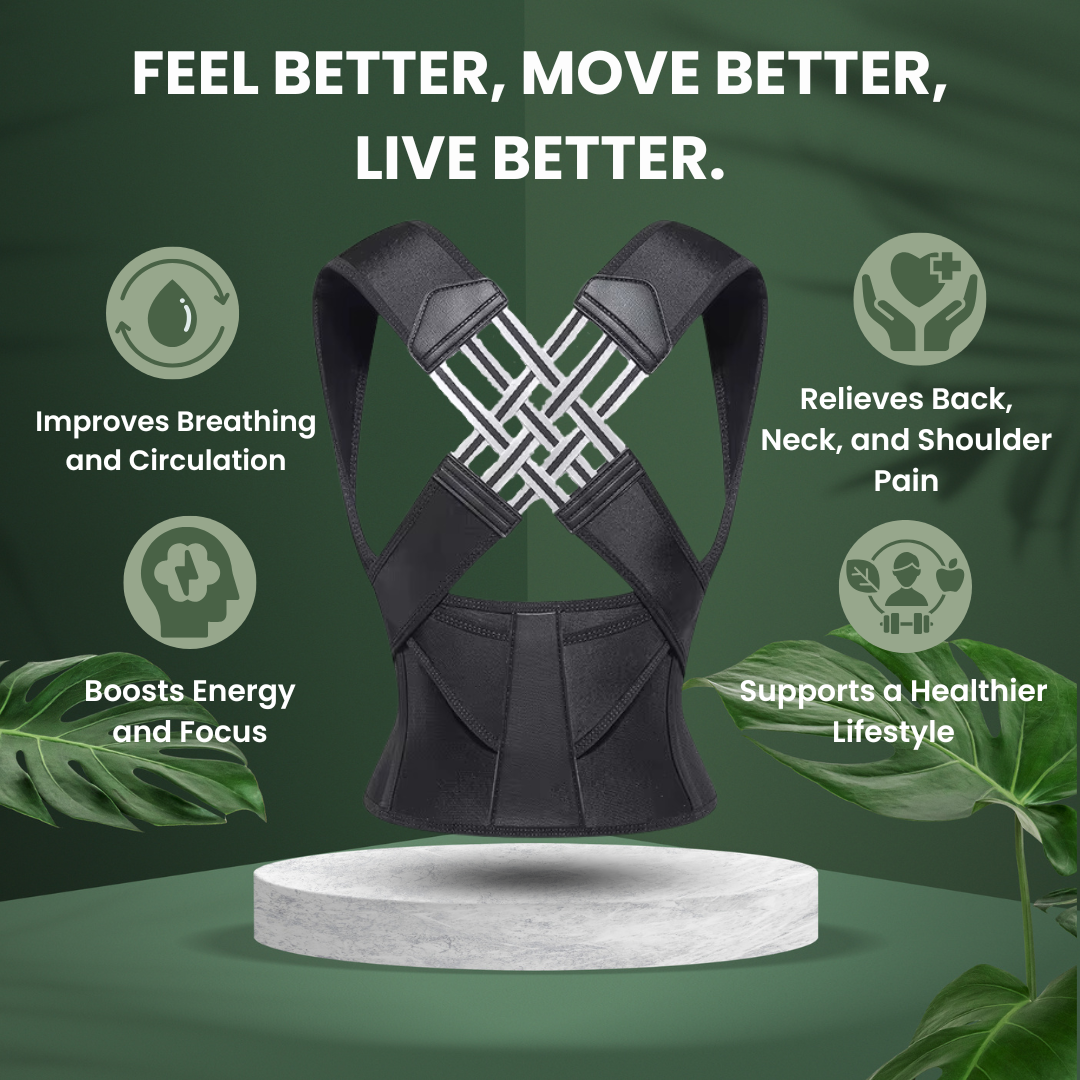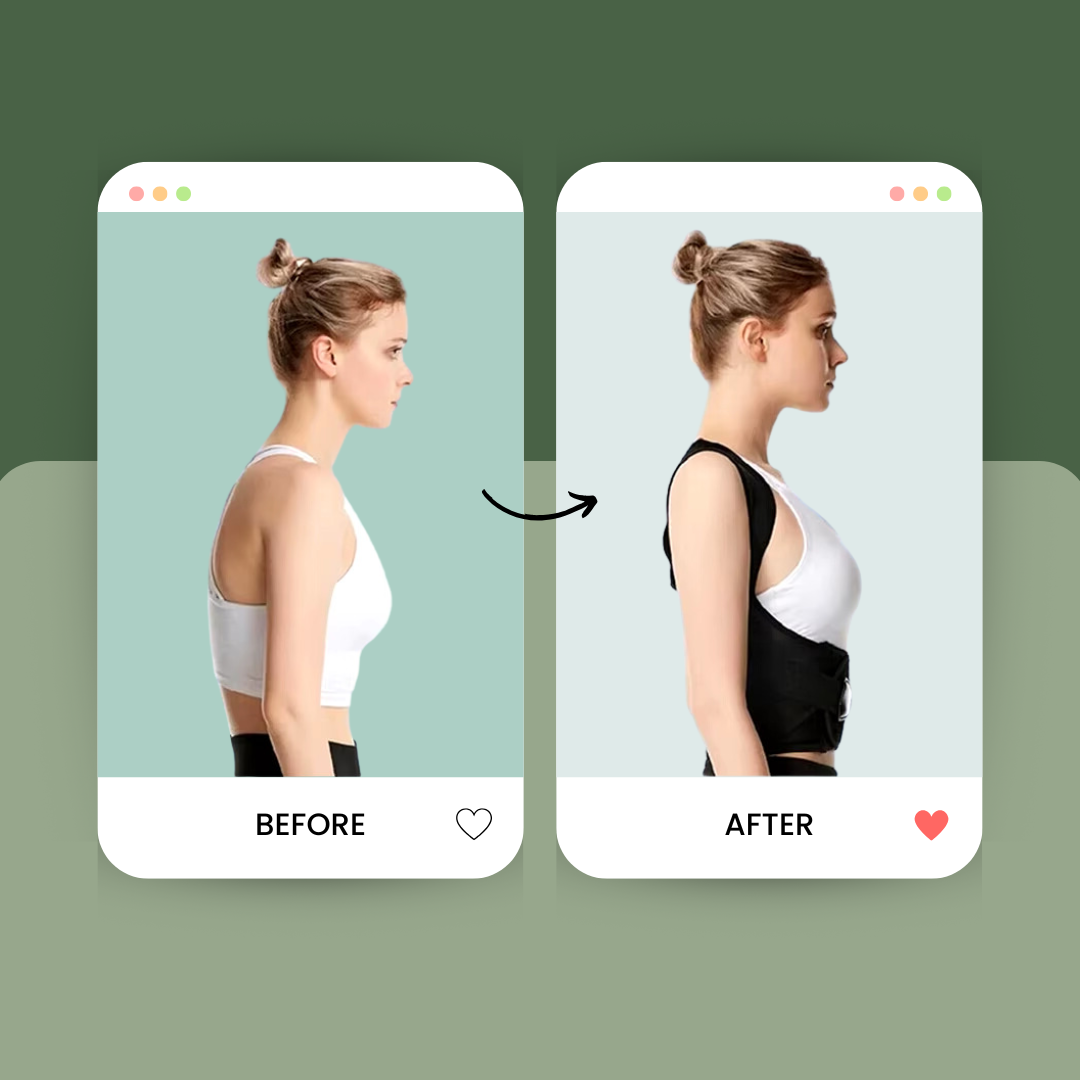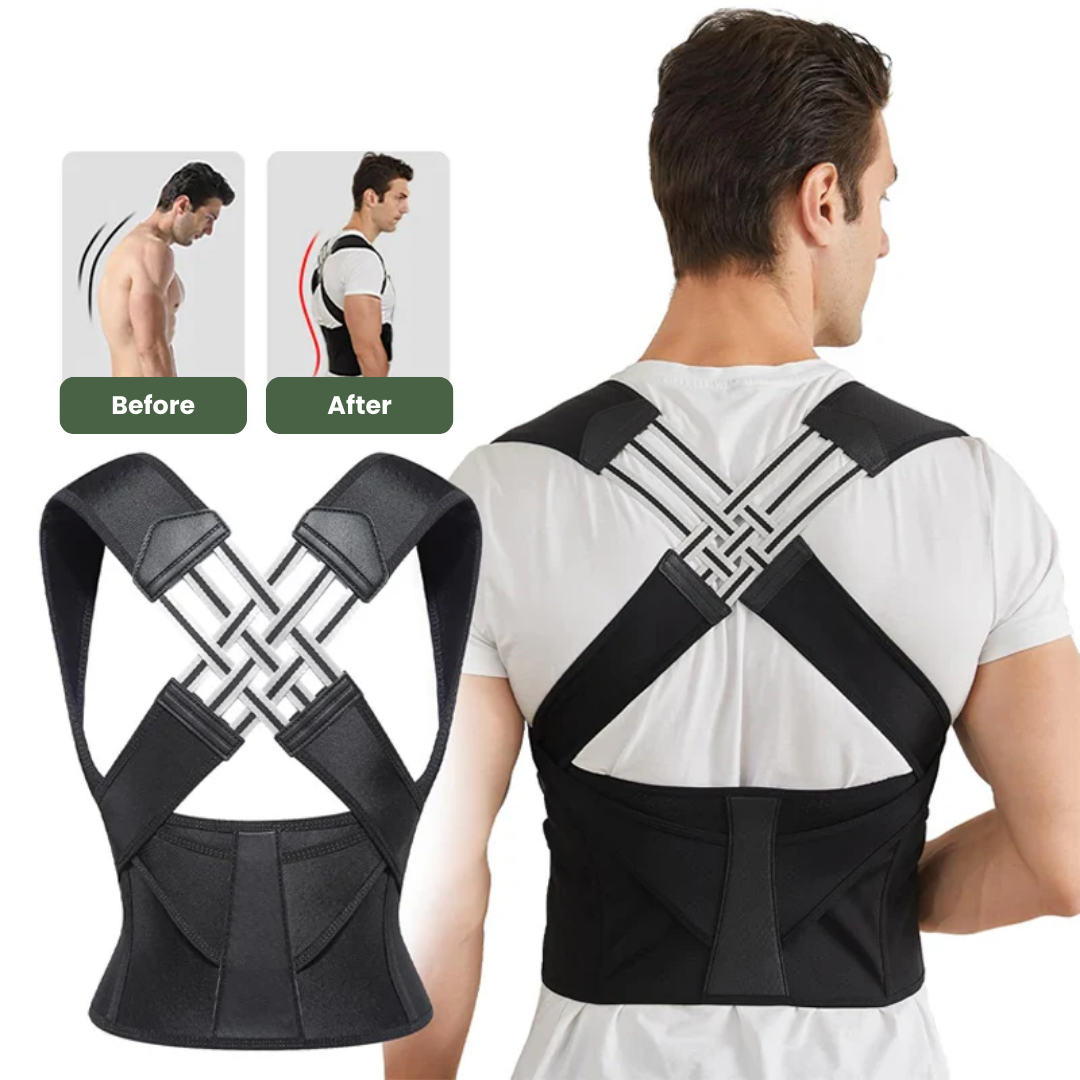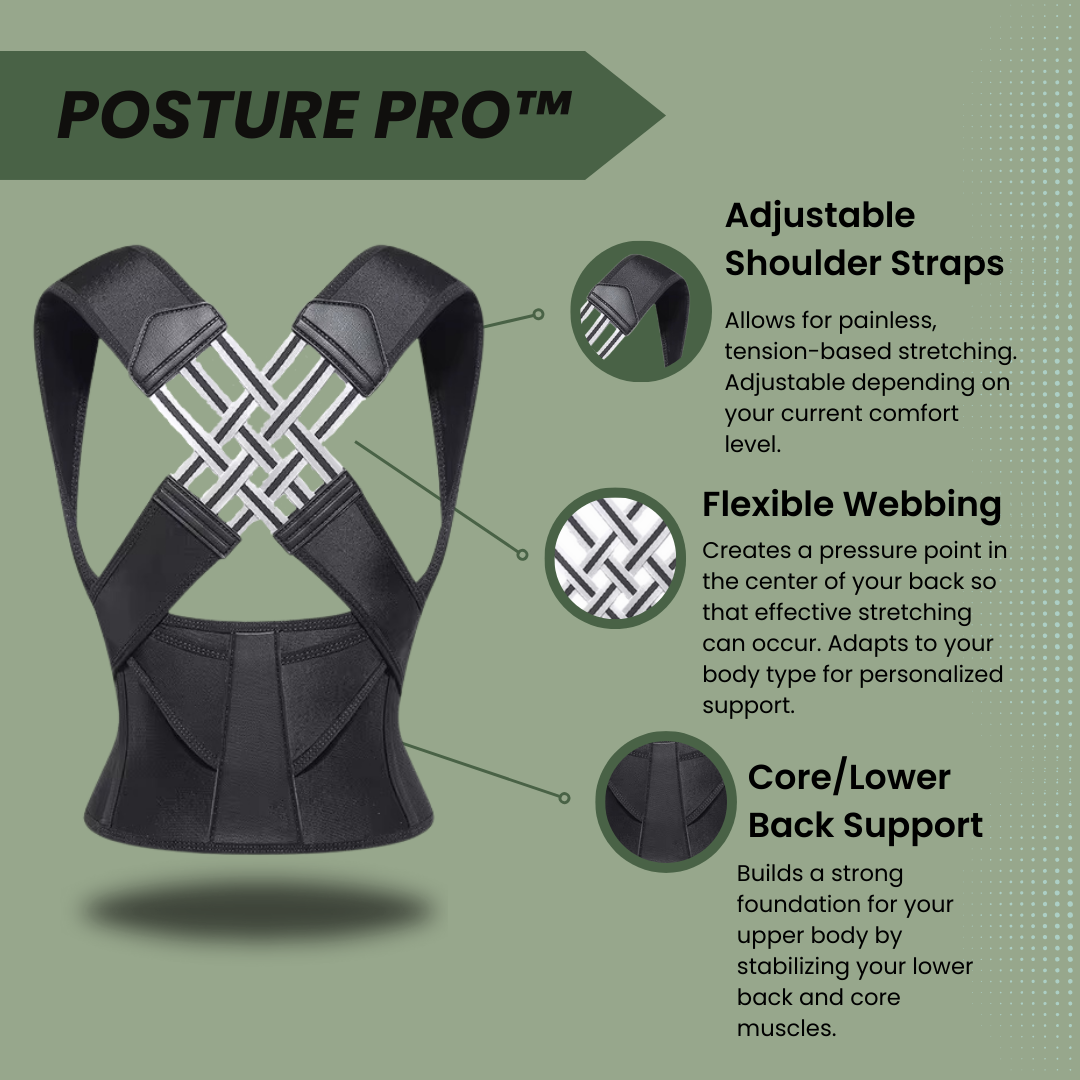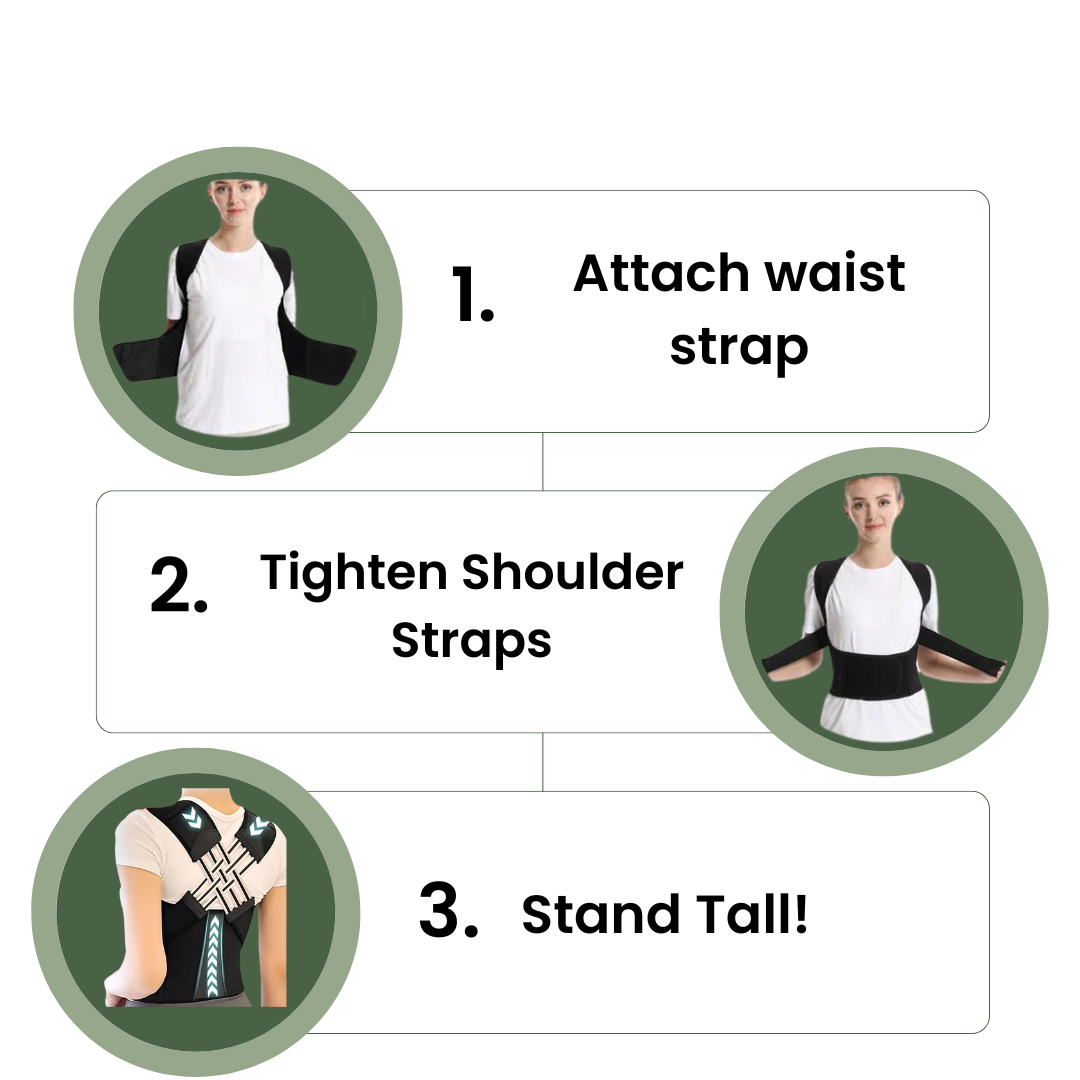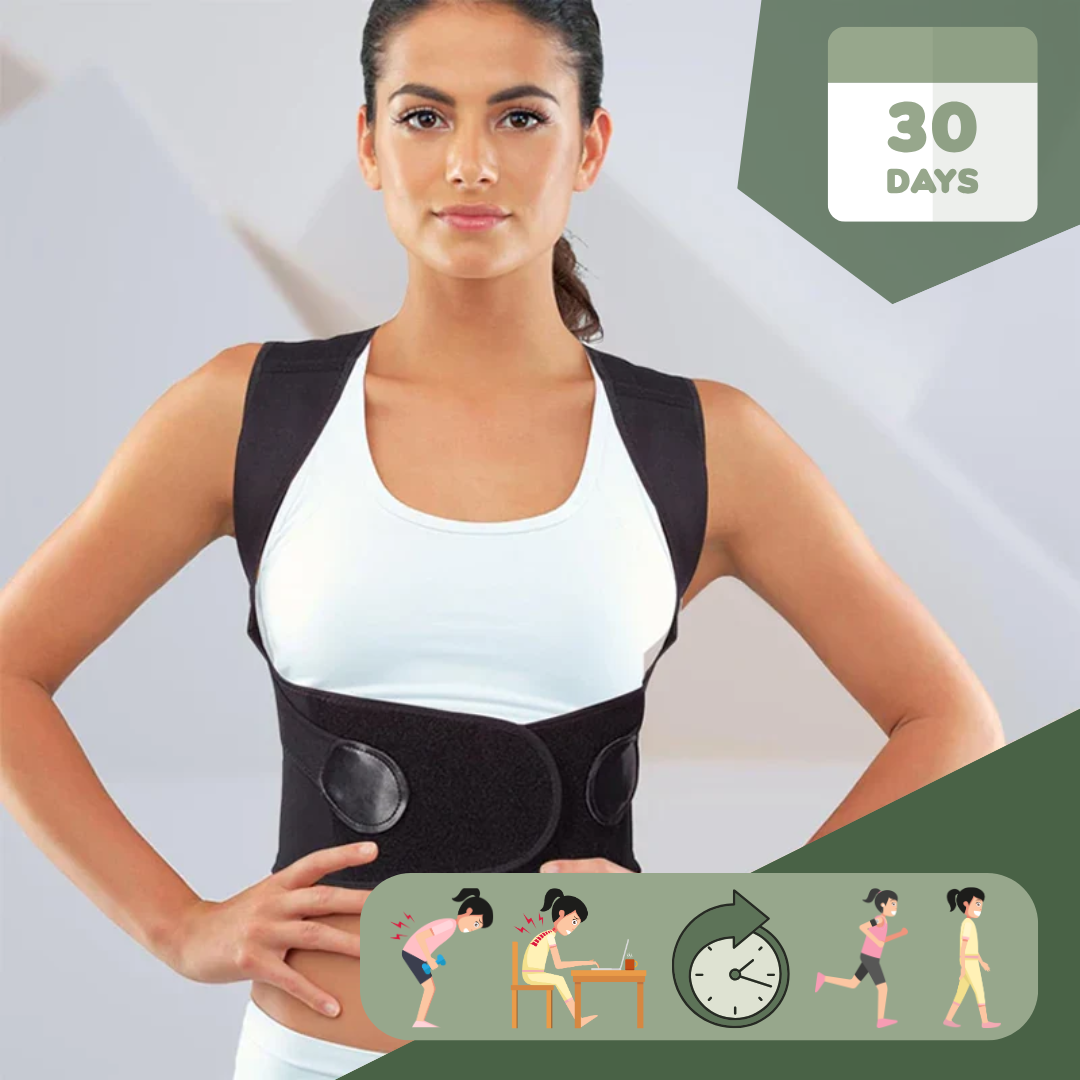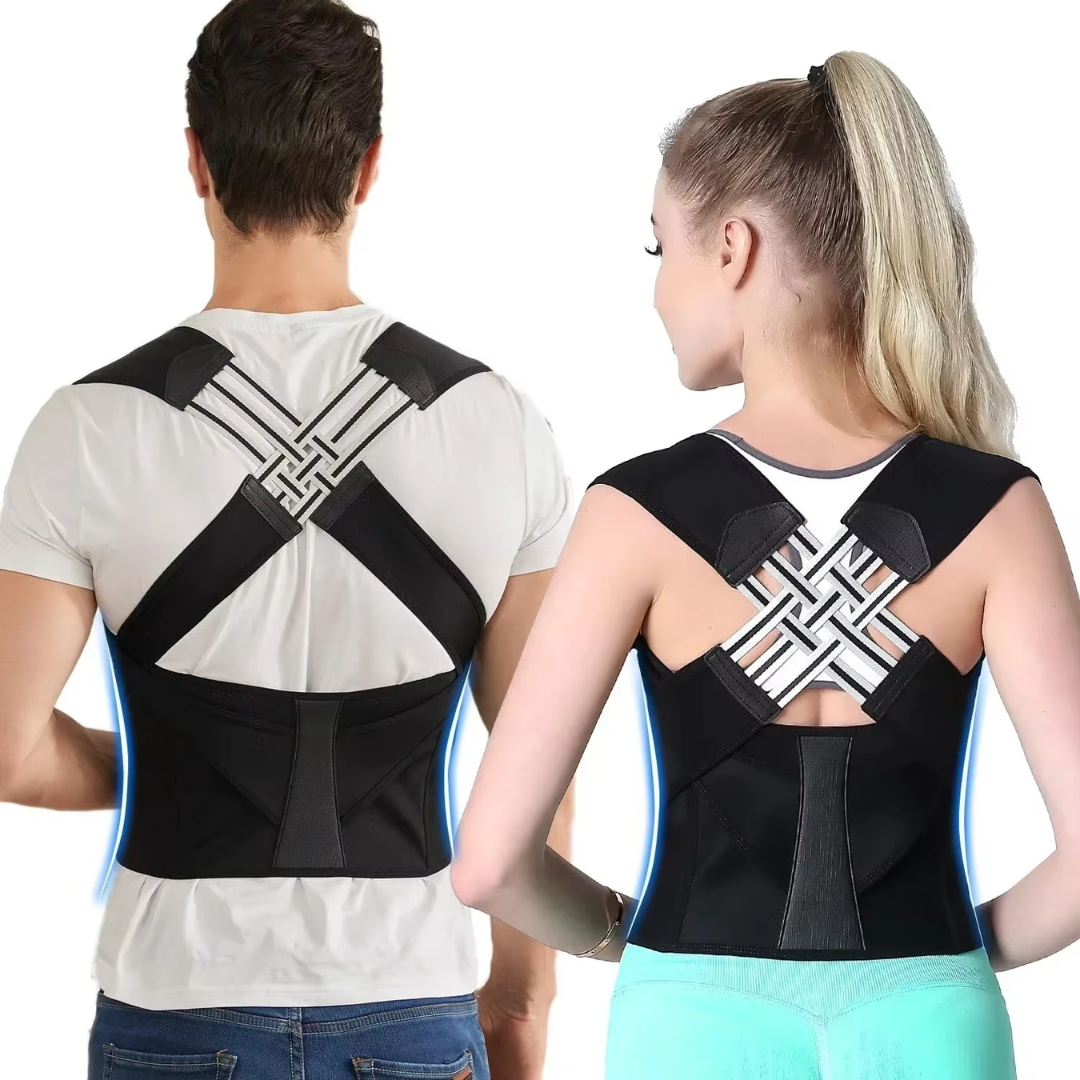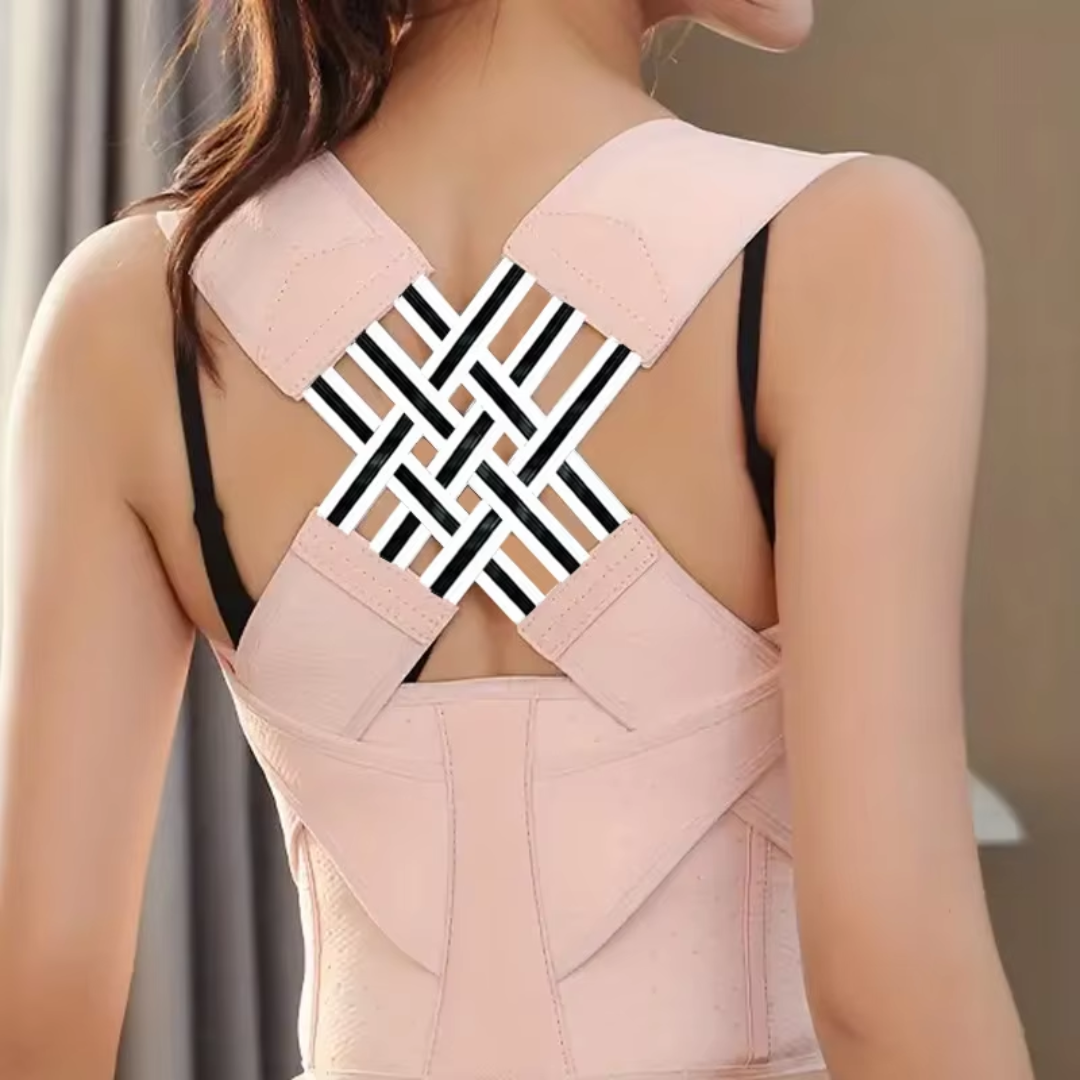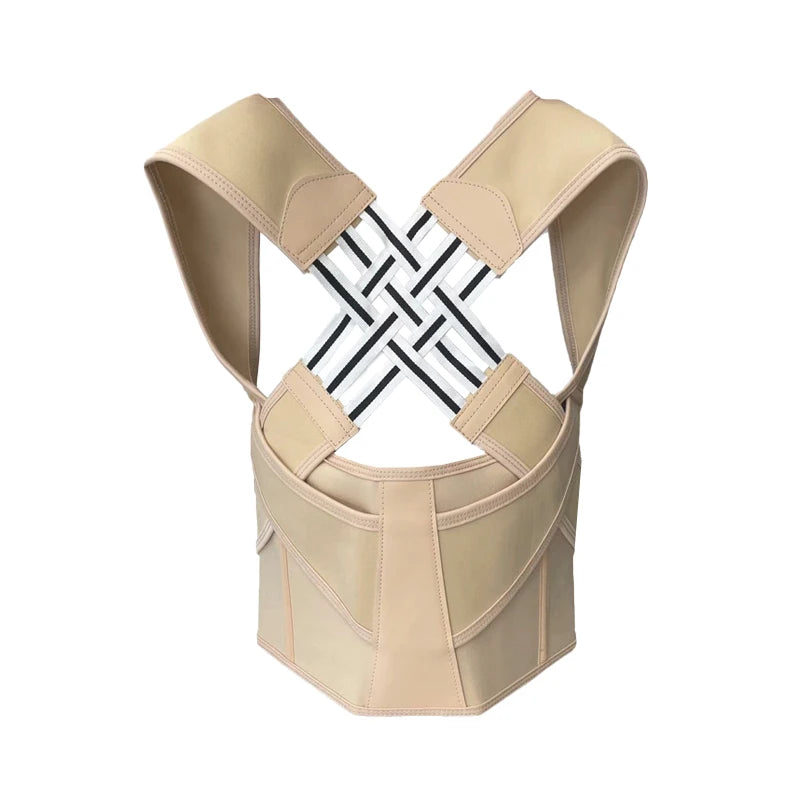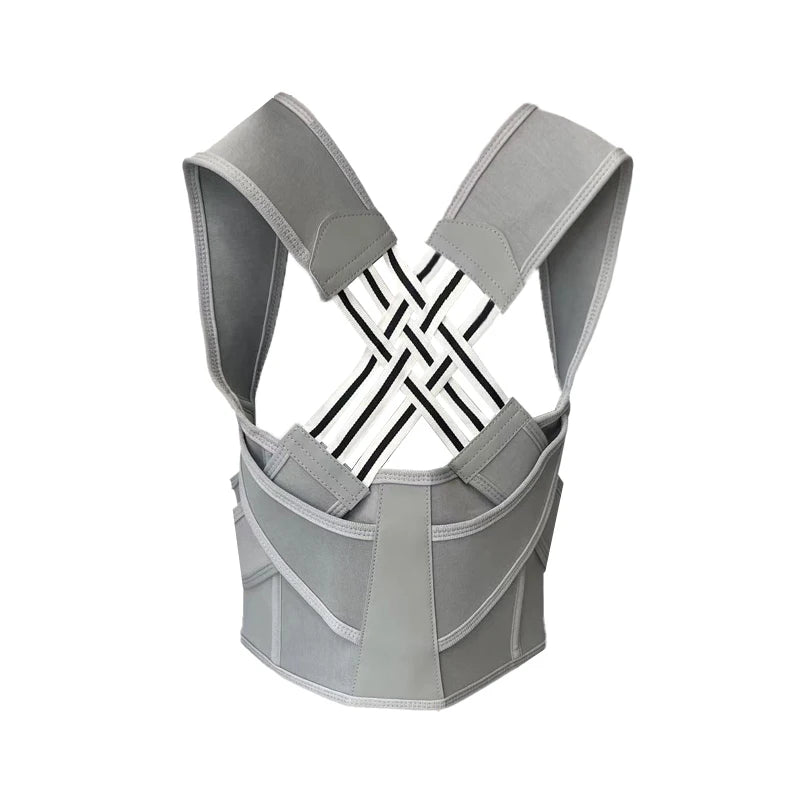Many people sit a lot every day, which can hurt their backs. The pandemic made us all sit even more, hurting our posture. This article talks about how posture correctors can help your overall health.
Keep reading to learn more!
Key Takeaways
- Good posture is important for health. It stops pain in the neck, back, and shoulders. People spent $134 billion on these pains from 1996 to 2016.
- Posture correctors help align your spine. They come as braces or electronic devices. They remind you to stand or sit straight.
- Wearing posture correctors can make you feel better and look more confident. They also stop long-term problems with posture.
- When picking a posture corrector, choose one that fits well and meets your needs.
- To get the best from a posture corrector, use it with exercises for a strong core and good body alignment.
The Importance of Good Posture
Good posture is key to good health. It affects muscles and bones, impacting overall wellness.
Impact on musculoskeletal health
Standing and sitting the right way helps our muscles and bones. This keeps us from getting hurt. If we don't stand or sit well, it can lead to pain in our neck, upper back, shoulders, and lower back.
From 1996 to 2016, people in America spent about $134 billion on fixing neck and lower back pain.
Muscles that are weak or stiff make bone problems worse. A study found many people have bad posture which leads to muscle aches. Good posture puts weight over our feet rightly. This makes working out better and eases strain on muscles and joints.
Connection to overall wellness
Maintaining good posture does more than just improving our appearance. It significantly contributes to our overall wellbeing. By ensuring a straight back and well-aligned shoulders, we maintain harmony between muscles and skeleton, thus reducing the likelihood of injuries.
Around 40% of adults are likely to experience back pain due to incorrect posture at some point in their lifetime.
Improper posture leads to neck and shoulder discomfort, and it can also affect the efficiency of our body functions. For instance, stooping can compress our stomach, making digestion more difficult.
Sitting upright improves our breathing as there's an increased space for lung expansion. Continually monitoring our standing or sitting position aids in cultivating the habit of good posture, which ultimately benefits long-term health.
What Are Posture Correctors?
Posture correctors are devices designed to improve posture and align the spine. They come in various types, such as braces or electronic devices, and function by providing support or feedback to encourage proper alignment of the body.
Types of posture correctors
Many people suffer from poor posture. Posture correctors can help fix this problem. Here is a list of different types:
- Harnesses are simple to wear. They pull your shoulders back.
- Shirts with muscle-activating panels encourage good posture by activating the right muscles.
- Vibration-feedback devices beep or vibrate to remind you to sit or stand up straight.
- Cross-back elastic braces have adjustable straps for better spine alignment. They are easy to adjust.
- Molded upper back braces give stiff support to keep your spine straight but might feel tight.
- Longline back braces cover the whole back. They ensure your entire spine is in the right position but may be hard to hide under clothes.
Each type helps improve your posture in its way. Some are more about reminding you to sit up straight, while others offer physical support. Choose one based on what you need most: a reminder, support, or both.
How they function
Posture correctors work by retraining the muscles and realigning the spine to help improve posture. They provide support and gentle reminders when you slouch, helping to increase your awareness of proper body positioning.
By reducing stress on areas like the back, neck, and shoulders associated with poor posture, they can alleviate discomfort while promoting better alignment. These devices come in various forms such as braces, electronic devices, or magnets that provide feedback for making posture adjustments, which enhances proprioceptive senses.
It's advisable to use them for a few hours daily as experts caution against prolonged dependency.
Benefits of Using Posture Correctors

Using posture correctors can reduce back, neck, and shoulder pain. They also help prevent long-term posture-related issues and improve confidence and appearance.
Reduced back, neck, and shoulder pain
Using posture correctors can help in alleviating back, neck, and shoulder discomfort. A study discovered that an exercise program aimed at improving posture effectively lessened musculoskeletal discomfort in shoulders, mid-back, and lower back.
This program led to notable discomfort reduction for shoulders (p = 0.000), mid-back (p = 0.049), and lower back (p = 0.002). Regular use of posture correctors has been shown to decrease the likelihood of neck and lower back discomfort as well.
Furthermore, systematic posture improvement programs are essential to address the high prevalence of poor posture in sedentary individuals. Poor sitting posture particularly impacts females by worsening discomfort.
Hence, integrating the use of an appropriate posture corrector into daily life can have significant advantages in alleviating discomfort and promoting overall wellness.
Prevention of long-term posture-related issues
To prevent long-term posture-related issues, it's crucial to improve postural awareness as studies link increased awareness with reduced pain intensity. Enhanced subjective postural awareness is essential for long-term benefits and effective management of chronic pain.
Posture correctors function as temporary support, helping the transition to better posture habits. A 10-week mind-body program has shown significant improvements in improving postural awareness scores, offering hope for individuals seeking to address posture-related issues early on and avoid long-term complications.
Improving postural awareness is a key component in preventing not only immediate musculoskeletal discomfort but also more serious long-term issues related to poor posture such as chronic back and neck pain.
It's important for those dealing with such problems to take steps towards enhancing their postural alignment early on.
Improved confidence and appearance
Using posture correctors can help enhance your confidence and appearance. When you stand or sit with good posture, it makes you look and feel more self-assured. Correcting your posture can also make you appear taller and leaner, giving off a more positive impression to others.
Moreover, having proper alignment of the spine and shoulders can reduce strain on muscles, leading to a more relaxed and open body language. These changes not only improve how others perceive you but also affect how you feel about yourself.
Improved confidence is linked to better performance in tasks as well as an overall boost in mood. Research has shown that maintaining upright posture signals greater self-esteem, leading to an improved sense of well-being.
Therefore, using posture correctors goes beyond physical benefits; it plays a significant role in enhancing your overall presence and mental outlook.
How to Choose the Right Posture Corrector
To choose the right posture corrector, first assess its comfort and fit. Consider your specific posture needs when selecting a corrector that will support you best.
Assessing comfort and fit
When selecting a posture corrector, it's essential to prioritize comfort and fit. You want the corrector to be snug without causing skin irritation. It should also provide support without restricting your movements.
To evaluate this, begin by wearing it for 15-20 minutes each day and gradually increase the time as you assess its comfort level. Moreover, ensuring an evenly distributed weight and breathable materials is crucial for prolonged use.
Considering your specific posture needs
When considering your specific posture needs, it's crucial to identify any existing musculoskeletal issues and understand the type of support your body requires. Factors such as spinal alignment, muscle imbalances, or recurring back pain should guide the selection of a suitable posture corrector.
Assessing whether you need lumbar support, shoulder realignment, or neck stabilization can help pinpoint the right type of corrector for your individual requirements. Seeking advice from a physical therapist or chiropractor can provide personalized insights into addressing your specific postural concerns.
It's also vital to consider how long you'll be wearing the posture corrector each day and what activities you'll engage in while wearing it. Certain designs may offer better comfort during different tasks — for example, adjustable straps might be useful if you're active throughout the day, while sitting at an office desk might necessitate a different support approach.
Moreover, evaluating potential skin irritation and ensuring that the chosen corrector promotes rather than hinders natural movement is paramount for achieving lasting benefits without discomfort.
Incorporating Posture Correctors into Daily Life
Incorporating posture correctors into daily life can help improve your overall wellness. They should be used effectively and balanced with posture exercises for optimal results.
How to use them effectively
Start by wearing the posture corrector for 15-30 minutes daily and gradually increase the duration over time to allow your body to adjust.
Ensure a proper fit to prevent discomfort and exacerbating posture issues.
Incorporate exercises like shoulder blade squeezes, chest stretches, and chin tucks alongside posture corrector usage to further enhance its effectiveness.
Regularly clean and maintain the posture corrector to uphold hygiene and comfort.
Complement the use of the posture corrector with activities promoting good posture such as balanced sitting, walking, and standing.
Balancing corrector use with posture exercises
Using posture correctors alongside exercises can help enhance their effectiveness and provide long-term benefits. Here are some ways to achieve this balance:
- Engage in posture-specific exercises like yoga or Pilates to strengthen core muscles and improve body alignment.
- Include regular stretching routines to counteract the effects of prolonged sitting and improve flexibility.
- Alternate between using the corrector and performing strengthening exercises throughout the day to avoid muscle dependency on the device.
- Highlight activities that promote natural postural alignment, such as walking or swimming, to complement corrector use.
- Seek guidance from a physical therapist or posture expert to develop a personalized exercise plan that complements your specific postural needs.
It's important to note that solely relying on posture correctors is not advisable; integrating exercises is crucial for maintaining long-term improvements in posture and musculoskeletal health.
Additional Tips for Improving Posture Naturally
To improve posture naturally, incorporate ergonomic adjustments into your workspace by using tools like adjustable desks and supportive chairs. Moreover, practicing stretching and strengthening exercises specifically targeted at postural muscles can further enhance body alignment and core strength.
Ergonomic workspace adjustments
Reconfiguring workspaces with ergonomic solutions can effectively prevent posture issues. Here's how to achieve it:
- Invest in stand-up desks to encourage movement and postural variation.
- Use lumbar-supported chairs to maintain natural spine curvature and reduce back strain.
- Position screens at eye level to alleviate neck strain and promote proper posture.
- Incorporate frequent movement and stretching every 30 minutes to enhance posture throughout the workday.
- Ensure weight is evenly distributed when seated for improved posture support.
Ergonomic workspace adjustments contribute significantly to preventing and alleviating musculoskeletal strain caused by poor posture.
Stretching and strengthening exercises
Stretching and strengthening exercises are essential to improve posture. They help to strengthen the core and back, which are crucial for maintaining good posture. Here are some effective exercises to incorporate into your routine:
- High Planks
- Side Planks
- Yoga
- Pilates
- Barre exercises
- Planks
- Crunches
These exercises support posture improvement by encouraging frequent movement and stretching throughout the day, combating the effects of prolonged sitting.
Conclusion
In conclusion, understanding the significance of good posture on our overall wellness is pivotal. Poor postures can cause various pains and potential injuries that affect our daily lives.
Posture correctors offer practical solutions to mitigate these issues by providing feedback for better alignment, guiding users toward a healthier posture. Incorporating them into daily routines requires careful consideration and balance, but ultimately they present an effective means to improve musculoskeletal health and overall well-being.
FAQs
1. What are posture correctors and how do they contribute to overall wellness?
Posture correctors are devices designed to assist with spine alignment, providing lumbar support and relieving back pain. They can be a part of physical therapy programs aimed at improving body alignment, reducing muscle imbalances and enhancing core strength for better overall wellness.
2. How can a posture corrector help improve my sitting posture?
A posture corrector provides vibrational feedback when your body deviates from proper alignment, training you to maintain an upright position while sitting. This helps reduce the strain on postural muscles in your neck and back that could lead to chronic pain.
3. Can wearing a backpack cause poor posture?
Carrying heavy backpacks frequently may result in rounded shoulders or hunchback conditions due to the pressure exerted on shoulder blades and scapula. This is why it's essential for adolescents, especially those with idiopathic scoliosis, to use backpacks with adjustable straps for balanced weight distribution.
4. Are there any side effects associated with using posture correctors?
While generally safe under guidance from healthcare professionals like chiropractors or physiotherapists, some people might experience skin irritation from incorrect usage of these devices or over-reliance without engaging in resistance training exercises that strengthen core muscles.
5. Apart from using a device, what other steps should I take towards correcting my bad posture?
In addition to employing tools like office chairs offering good lumbar support or wearing corrective braces; regular weight training workouts targeting primary care areas including neck alignment; consultations with doctors specializing in physical therapy or even spine surgeons if necessary - all play crucial roles in maintaining a healthy posture.


